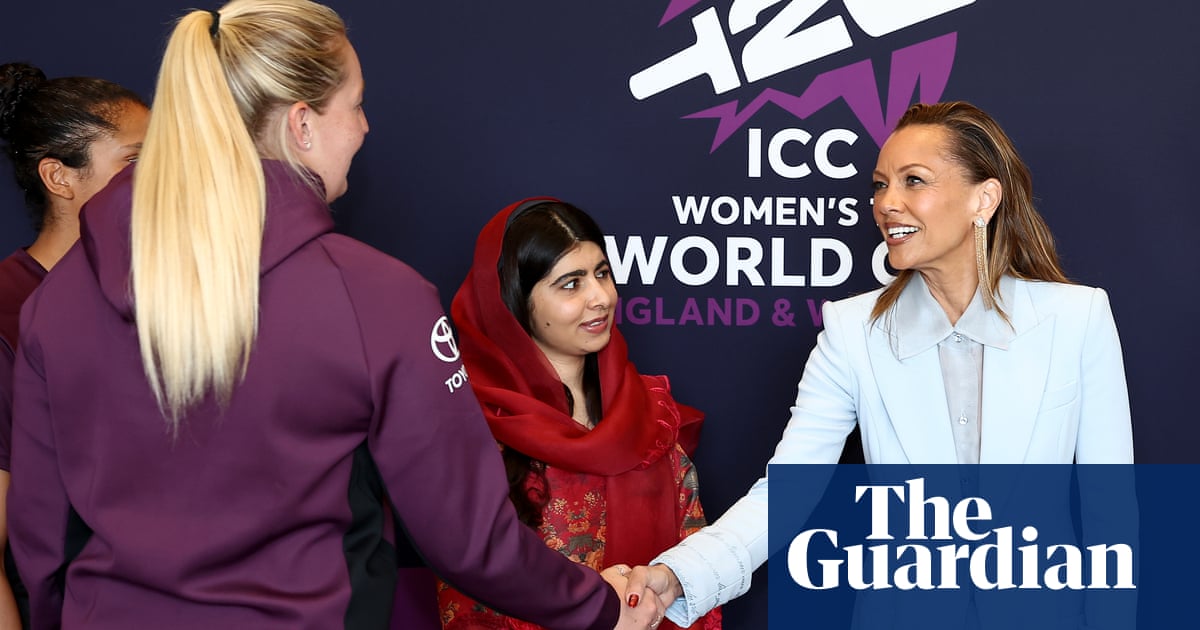Vanessa Williams, the American actress of Ugly Betty and Desperate Housewives fame, is on the surface an unlikely candidate to spearhead the launch of aCricketWorld Cup.
However, at Lord’s on Thursday Williams formed part of an all-female panel – alongside World Rugby player of the year Ellie Kildunne and Nobel peace prize winner (and former Oxford University cricketer) Malala Yousafzai – which officially kickstarted the countdown to the 2026 ICC Women’s T20 World Cup, to be held in England.
Listening to Malala attempt to explain cricket fielding positions to a former Miss America, also the singer of 1992 hit single Save the Best for Last, surely made this one of the quirkier events ever to grace the Long Room. But as the event progressed, the choice of three women panellists who are leaders in their respective fields of entertainment, sport and activism began to make sense.
Deliberately staged in the inner sanctum of the MCC, where women were forbidden to enter until 1999, this was an event dominated by female voices and faces: of the assembled invitees from local government, national governing bodies and the sports industry, at least three-quarters were female.
The diversity of attendees reflected the England and Wales Cricket Board’s vision for the tournament, which extends far beyond a single sporting event. As Beth Barrett-Wild, who is co-tournament director, explains: “This isn’t just another tournament, another moment in time. It’s our time to come together and take women’s cricket to where it belongs: centre stage.
“We must nurture the sparks that a World Cup offers into roaring flames that permanently change how society thinks, feels and behaves around women’s cricket, in this country and around the world.”
The competition will begin on 12 June next year, taking in seven venues around England: Old Trafford, Headingley, Edgbaston, the Rose Bowl, the Oval and Bristol County Ground, culminating in the final at Lord’s on 5 July 2026. Twelve teams will compete for the trophy: Scotland and Ireland still have the chance to be among them, with the final lineup set to be decided at next year’s qualifying tournament.
This is a step-up from the last time the ECB hosted a women’s tournament in 2017, when smaller-capacity venues like Derby and Leicester were preferred. The ECB’s overall ambitions for the tournament also dwarf those of eight years ago. When the 2017 event team first pitched the idea of a sell-out Lord’s final, they were laughed out of the room: this time around, that is a minimum expectation.
The ECB’s aim for 2026 is to not only exceed but double the previous highest total attendance at a Women’s Cricket World Cup (the existing record is 136,549, set by Australia in 2020). Further goals include making this the most-watched and the highest-grossing ICC women’s tournament ever. Beyond that, Barrett-Wild sets her sights on creating what she calls “a new breed of tribalism”: a loyal fanbase for women’s cricket which returns to matches again and again.
“This moment should feel less like a standalone launch event for a World Cup, and more like a turning point towards a systemic change in the standing and status of women’s cricket,” Barrett-Wild says.
Sign up toThe Spin
Subscribe to our cricket newsletter for our writers' thoughts on the biggest stories and a review of the week’s action
after newsletter promotion
Across the length of the room, huge billboards obscured the usual portraits of long-dead male cricketers. Instead, we were treated to a showcase of the most iconic moments in the history of women’s sport: fromBillie Jean King, to theLionesses winning the 2022 Women’s Euros; fromBobbi Gibb at the Boston Marathon, toJessica Ennis-Hillon Super Saturday – and of course Anya Shrubsole, whosesuperb bowling won England a World Cupthe last time a women’s final took place at Lord’s.
Back then, England seamer Lauren Bell was a 16-year-old torn between cricket and football: it was watching Shrubsole’s magical spell of six for 46 from the stands at Lord’s which convinced her to choose cricket. In just over a year’s time, Bell could be following in her heroine’s footsteps and opening the bowling in a home final. “Seeing England win a World Cup, 16-year-old me wanted to be there one day,” Bell says. “It’s crazy to think that nine years on, I’ll have the chance to do that and be that person, and maybe inspire even more people.”
The launch event concluded with a spine-tingling moment which would surely have made WG Grace turn in his grave: the projection of portraits of female cricketers of all ages across every wall of the Long Room, conjuring up an alternative vision of what a sport which truly embraces half the population could one day look like. Vive la révolution.
